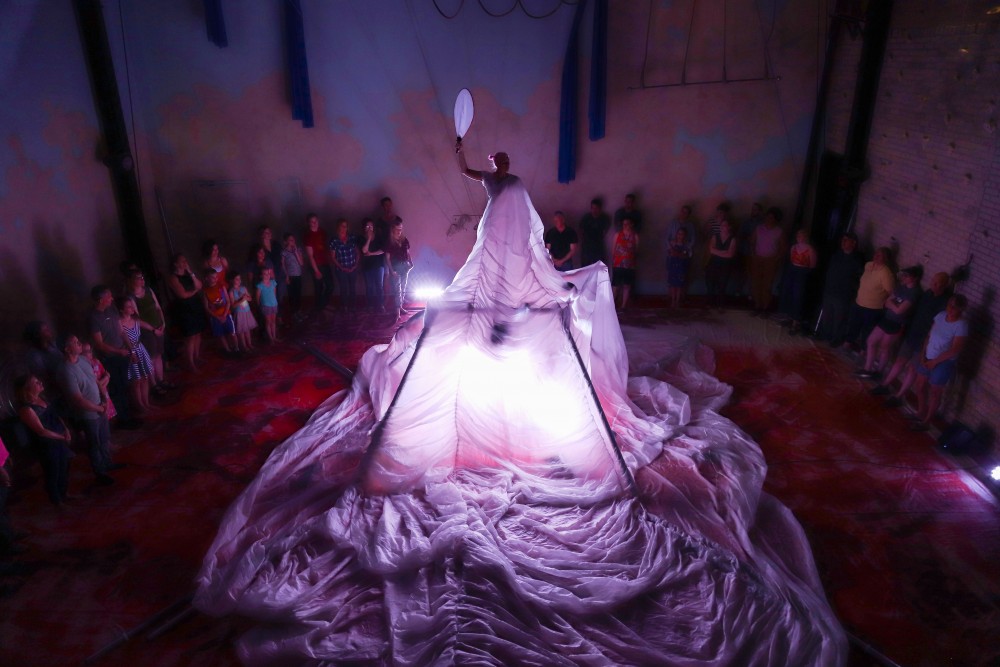A group of about 100 audience members edged the corners of the square studio space, shyly looking in wonder at the sea of white fabric that took up most of the floorspace.
The cloth seemed to breathe, moving softly up and down, the red lights underneath it making glowing pink pockets below the surface. Grabbing the fabric with two hands, the audience lifted the sheet over their heads and went under, entering a blanket fort like no other.
“Brave Space,” Chicago-based Aloft Circus Arts’ newest show, doesn’t fit the traditional notion of a circus.
Devoid of trained animals, clowns or even a stage, the contemporary circus captured the audience’s attention Saturday night at Xelias Aerial Arts in Northeast Minneapolis.
“Fundamentally, what I see the show being about is community,” said cast member Rachel Webberman. “Living in a time that feels isolating and divisive, [this show demonstrates] what it can look like to really find people you can connect with and build something with them.”
Webberman said in order to build community, people need to be willing to step out of their comfort zone and do things that require them to be brave.

Removing the barrier between audience and performer, the crowd sat knee-to-knee, just feet away from suspended acrobats, saucer jugglers and daring high-walkers.
Here, performers are close enough to the audience that the crowd can see beads of sweat on the acrobats’ faces and note the quiver of limbs as the base strains to lift four of her associates on her shoulders.
“In the United States, we’re so focused on self-reliance and independence … which is not very good when it comes to building community,” said artistic director Shayna Swanson. “We’re not used to asking for help, and because we’re not used to asking for help, we’re not helping anymore.”
Other circus shows may have the audience play a relatively passive role, but here, performers would grab members of the crowd during the show and have them steady poles which the performers would walk on or which helped hold up the tent.
In trusting that people would be willing to assist with the show, “Brave Space” creates a world where strangers can rely on each other, Swanson said.
“It’s sort of [a] transformative thing because it’s not something we experience very much in our lives,” she said. “We decided to go forward with this show believing that everyone has the best intentions.”
Although contemporary circuses have become more popular with the aid of big-name companies like Cirque du Soleil, smaller businesses like Aloft have a difficult time staying open.
“In the United States, there’s not really a funding structure for circus arts,” Swanson said. “It’s hard to make it as a small arts company.”

Unlike traditional performance arts like theatre and music, she said circus arts are usually seen as “commercial” entities and not even thought of as an art form. She hopes that performances like this one will show people the versatility of circuses and help them appreciate the artistry and skill that goes into making a show.
“That’s the goal,” she said. “Through building our own tour, I’m trying to share [our] knowledge with other circus companies that want to do the same thing.”




















